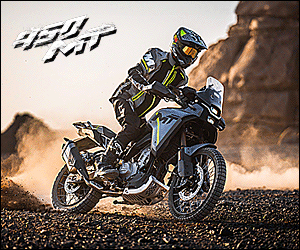Bridgestone reflect on demands of 56 degree track temperatures at Catalunya
The Catalunya Grand Prix was the hottest of the season; a rare dry race for the 2009 MotoGP season. Track temperature reached a high of 56 degrees Celsius during the weekend, making it equally demanding and sweltering for tyres and riders alike.
A fantastically close head-to-head battle between teammates Valentino Rossi and Jorge Lorenzo was won by the Italian on the last corner of the last lap, meaning the Bridgestone slicks were not given any rest during the 25 lap race.
Q&A with Tohru Ubukata – Bridgestone Motorsport – Manager, Motorcycle Race Tyre Development
How did the Bridgestone slicks cope with the very high track temperature during the weekend?
“The track conditions this weekend were some of the most demanding we can expect to see all season, so it was a very tough challenge for our Bridgestone slicks but they performed well.
“Tyres are normally cooled by air flow during a lap, particularly along the straight where the side loads are reduced, so when the ambient temperature is as high as it was over the weekend, this makes it even tougher. Not only do you have the high track temperature increasing the heat in the rubber, but the hot air is less efficient in cooling them between corners so you end up with a much higher operating temperature throughout the lap.
“However, I am happy with the durability and consistency of our slick tyres this weekend. We saw that Valentino and Jorge could produce very consistent lap times throughout the race in a very close race right to the chequered flag.
“Also, we have now seen this season that with just four slick compounds our tyres can perform well with track temperatures that range from to 20 degrees Celsius in Le Mans to 56 degrees Celsius here. I am happy because this shows the wider operating range we intended for our tyres this season as Official Tyre Supplier.”
It was the first race for Bridgestone’s asymmetric rear tyres in Catalunya. How did they perform?
“I am pleased with the consistency and performance of our asymmetric rears this weekend. Both the hard compound and the extra hard compound rear slick tyres were used this weekend, although it was the extra hard compound that was chosen by all riders for the race because of its increased durability over the 25 laps in such high ambient and track temperatures.
“Asymmetric tyres are very important at this circuit as the right side of the rear tyres gets used much harder than the left, mostly because of the two very long right hand corners that the riders are on the power through. These really increase the temperature of the rubber, and so the compounds we use for the right shoulder of the rear tyres need to be harder. The soft compound left shoulders are needed to provide the riders with optimum grip at a lower operating temperature through the left handers. The grip and feeling for the riders was consistent throughout the lap, between right and left hand corners, so we can say that the asymmetric rear slick tyres worked well in Catalunya.”
























